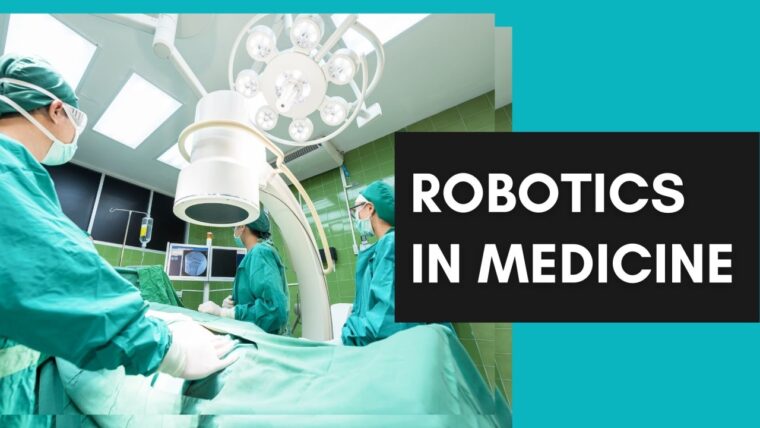Introduction
Robotics has revolutionized the healthcare industry, especially in the field of surgery. Modern hospitals worldwide are increasingly adopting robotic systems to enhance surgical precision, improve patient outcomes, and reduce recovery time. From minimally invasive procedures to complex surgeries, robotic-assisted systems offer a blend of technology and medicine that is reshaping the way surgeries are performed.
In this article, we will explore the role of robotics in modern hospital surgeries, its benefits, applications, and the future it promises.
What Is Robotic Surgery?
Robotic surgery, also known as robot-assisted surgery, involves the use of computer-controlled robots to assist surgeons in performing surgical procedures. These robotic systems do not replace the surgeon but act as advanced tools that enhance their capabilities.
One of the most widely used systems is the da Vinci Surgical System, which allows surgeons to control robotic arms through a console, offering enhanced precision, flexibility, and control.
Key Components of a Robotic Surgery System
- Surgeon Console – Where the surgeon sits and controls the robotic instruments.
- Patient-Side Cart – Contains robotic arms that perform the actual surgery.
- Vision System – Provides a 3D high-definition view of the surgical site.
- Robotic Instruments – Specialized tools that mimic the movement of a surgeon’s hand but with more precision.
Common Applications of Robotic Surgery
1. Urologic Surgery
Robotic systems are widely used in prostatectomies and kidney surgeries due to their accuracy in navigating delicate tissues.
2. Gynecological Surgery
Hysterectomies and myomectomies are now commonly performed using robotic assistance for faster recovery and fewer complications.
3. Cardiac Surgery
Robotic-assisted heart surgeries such as mitral valve repair allow for small incisions and improved patient outcomes.
4. Orthopedic Surgery
Robotics assist in knee and hip replacements, improving alignment and prosthetic fitting.
5. General Surgery
Appendectomies, hernia repairs, and bariatric surgeries benefit from robotic precision and faster healing.
Benefits of Robotic Surgery
1. Minimally Invasive
Robotic systems enable smaller incisions, which result in less bleeding, reduced pain, and minimal scarring.
2. Greater Precision
Surgeons can perform highly complex procedures with enhanced dexterity, reducing the risk of human error.
3. Faster Recovery Time
Patients generally experience quicker healing and shorter hospital stays compared to traditional surgery.
4. Enhanced Visualization
3D, high-definition vision allows for better identification of critical structures, improving surgical safety.
5. Reduced Risk of Infection
Smaller incisions mean fewer chances for infections, a major concern in traditional open surgeries.
Limitations and Challenges
While robotic surgery offers numerous advantages, it is not without limitations:
- High Cost: Robotic systems are expensive to purchase, maintain, and operate.
- Training Requirement: Surgeons and staff need specialized training, which may not be available in all regions.
- Limited Access: Smaller or rural hospitals may not have access to robotic systems.
- Longer Setup Time: Preparing the robotic system can increase the total time of surgery.
Real-World Examples
1. Cleveland Clinic, USA
This hospital uses robotics for cardiac and prostate surgeries and is known for its advanced robotic-assisted surgical program.
2. Apollo Hospitals, India
One of Asia’s largest robotic surgery programs, offering robotic knee replacements and cancer surgeries.
3. Karolinska University Hospital, Sweden
A pioneer in using robotic systems for pediatric surgeries and complex cancer treatments.
Robotics vs. Traditional Surgery: A Comparison
| Feature | Robotic Surgery | Traditional Surgery |
|---|---|---|
| Incision Size | Small | Large |
| Recovery Time | Short | Longer |
| Precision | High | Moderate |
| Blood Loss | Minimal | Higher |
| Hospital Stay | Shorter | Longer |
| Risk of Complication | Lower | Higher |
Future Trends in Robotic Surgery
1. AI Integration
Future systems will use artificial intelligence to assist in decision-making and improve surgical accuracy.
2. Remote Surgery (Telesurgery)
Surgeons may soon perform surgeries from thousands of miles away using robotic systems connected via high-speed networks.
3. Miniature Robots
Microrobots could be used for highly localized treatments inside the human body, such as targeted cancer therapy.
4. Improved Haptic Feedback
Advancements will allow surgeons to feel tissues through robotic controls, further enhancing precision.
Considerations for Patients
Before undergoing robotic surgery, patients should consider the following:
- Confirm that the surgeon has experience in robotic procedures.
- Understand the benefits and risks compared to traditional surgery.
- Check if the procedure is covered by insurance.
- Inquire about the hospital’s track record with robotic surgeries.
Conclusion
Robotic surgery is no longer just a futuristic concept—it is a present-day reality in many leading hospitals around the world. With benefits like precision, faster recovery, and lower complication rates, robotics is transforming surgical care. As technology evolves, the role of robotics in modern hospital surgeries will only expand, making healthcare safer and more effective for patients everywhere.
